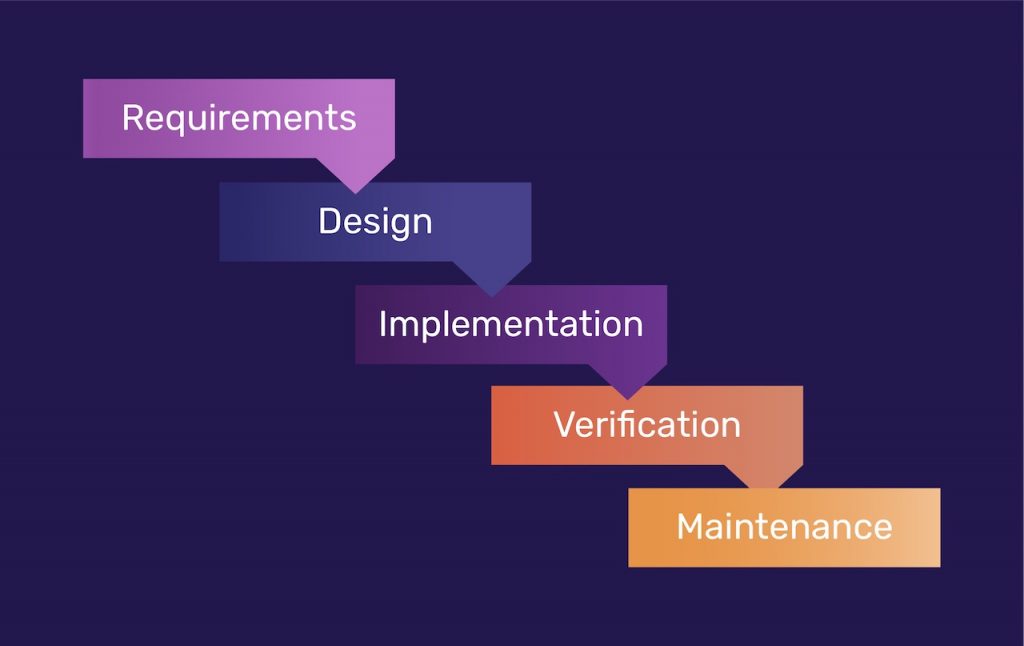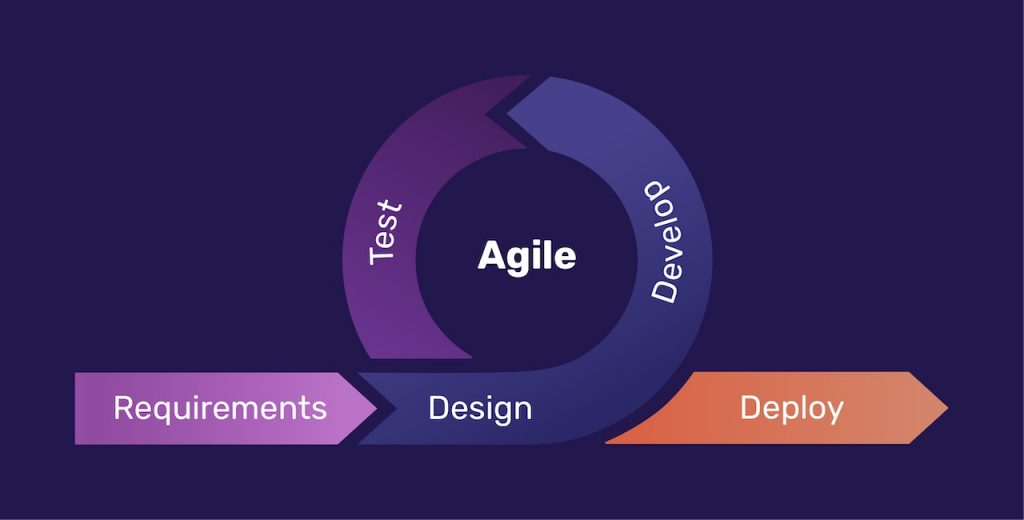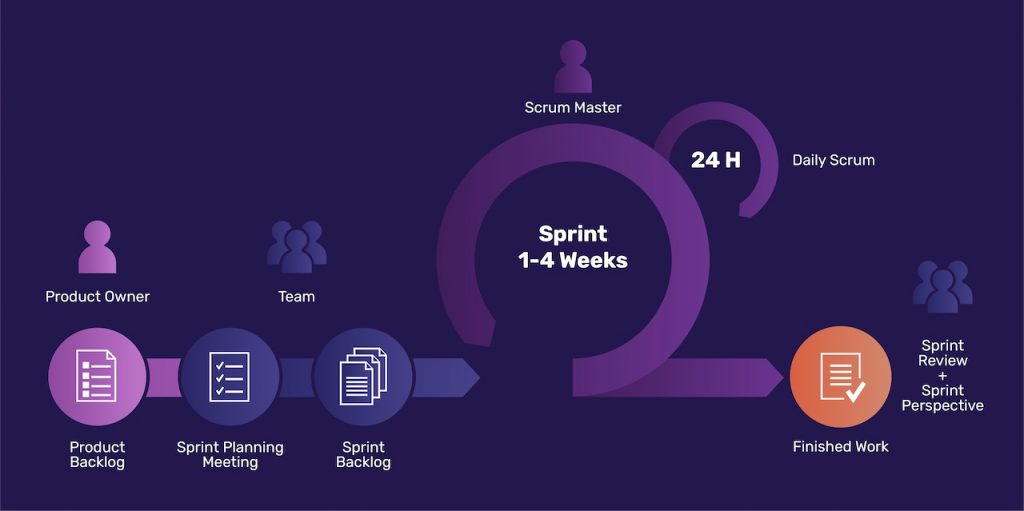How to Speed Up Development Cycles Without Sacrificing Quality
Only about half of private sector IT projects are completed on time, according to research by McKinsey. In other words, one in every two software...
7 min read
Written by Keith Shields, Sep 11, 2025

For any software development project to succeed, it needs the right software development methodology behind it. The challenge? There are plenty of options, each with unique strengths and trade-offs. And while some get a lot of buzz at times, they may not be the right fit for your project’s needs.
If you’re a SaaS founder or leading a product team, you need clarity on how these methodologies affect speed-to-market, scalability, and long-term growth. In this article, we’ll break down four popular software development methodologies, highlight their pros and cons, and share when each makes the most sense for your SaaS product.
Comparison Table: Waterfall vs Agile vs Lean vs Scrum
How Designli Guides You to the Right Development Methodology
FAQs
Working with a Partner: Why It Matters (Conclusion)
Waterfall development methodology, also called the Waterfall Method, is one of the oldest and most traditional software approaches.

Waterfall uses a rigid linear model with sequential phases for development: requirements, design, development, testing, release, and maintenance. Each phase must be completed before proceeding to the next step.
Waterfall works best when projects have clear objectives and stable, well-understood requirements. It’s also helpful for teams with less experience or frequent turnover, since the linear nature makes tracking progress and onboarding new contributors easier. Waterfall tends to be most effective with shorter-duration projects.
Waterfall can work if your product has fixed requirements like compliance-driven features or client-specific builds. But it’s rarely the right fit for evolving MVPs or SaaS products that rely on fast iteration and user feedback.
The Agile development methodology has gained considerable popularity recently, with many companies adopting it to accelerate delivery. Instead of the “big bang” launch of Waterfall, Agile focuses on frequently releasing smaller units of functionality. In fact, several other modern methodologies are built on an Agile framework.

Agile uses short cycles of requirements, development, and testing driven by collaboration across cross-functional teams. This leads to faster releases, continuous learning, and a more efficient development process that integrates learning and facilitates change.
Agile is most effective in smaller organizations or projects with a dedicated team. It’s beneficial for high-risk projects with limited clarity initially, since feedback is gathered along the way. Agile is also helpful for longer-duration projects that can be broken into smaller work units.
Agile is often the go-to methodology. It supports MVP development, rapid iteration, and feature testing with real users. The trade-off: it requires a dedicated, engaged team and can be harder to scale if you lack resources.
Lean Software Development is an Agile framework designed to optimize development time and resources and to eliminate waste. The goal is to deliver only the minimum product requirements that meet the user’s core pain point(s). It’s often referred to as the Minimum Viable Product (MVP) strategy.

With Lean development, a team works to release an app to the market that meets users’ minimum requirements. Once the app is in the users' hands, the team learns directly from users to decide what to add or improve. Development is iterative and shaped by real user behavior, not assumptions.
Lean development is especially effective on a limited budget when a product or app is new to a market and more robust user feedback is desired.
Lean is often the best first step for launching fast, validating assumptions, and refining with feedback. It’s ideal for MVPs and early-stage SaaS products, but scaling later will require stronger processes and possibly a hybrid approach.
Scrum is one of the most widely used Agile frameworks and is often considered the most structured approach within Agile. It emphasizes teamwork, accountability, and delivering value in short, iterative cycles.

Scrum is an Agile framework used for developing, delivering, and sustaining complex projects. It establishes a set of prescribed team roles and meetings the team will hold on a regular cadence during boxes of time, or sprints.
Scrum is very nimble, so it’s quite effective when requirements are not clear or change frequently. It does require a dedicated team with some specific roles (including a Product Owner, Scrum Master, and team members), so it’s important for there to be buy-in for this approach in the organization.
Scrum works well when building complex platforms where priorities change rapidly, like early-stage SaaS MVPs evolving with customer feedback. However, it requires dedicated roles and consistent engagement, which can challenge lean startups.
Here’s a quick comparison table of the 4 Best Software Development Methodologies:
|
Methodology |
Pros |
Cons |
SaaS Fit |
|
Waterfall |
Easy to understand and manage, clear phases, predictable timeline |
Rigid, hard to change scope, no early feedback |
Works for short, low-risk projects with fixed requirements. Rarely ideal for SaaS startups. |
|
Agile |
Frequent releases, adaptable to change, and user feedback integrated quickly |
Time-intensive, harder to plan long-term, onboarding can be difficult |
Best for early-stage SaaS products that need flexibility and quick iterations. |
|
Lean |
Focus on MVP, fast release, cost-efficient, and user-driven |
Heavy reliance on the team, harder to scale, requires strong documentation |
Great for MVPs and SaaS founders on a budget who need to validate product-market fit. |
|
Scrum |
Structured Agile approach, clear roles, high visibility, efficient sprints |
Requires a dedicated team, scope creep risk, and quality control challenges |
Strong fit for growing SaaS teams that need transparency, accountability, and rapid iteration. |
Choosing a software development methodology isn’t just a technical decision; it defines how your SaaS could potentially evolve, scale, and attract investors. At Designli, we work with founders to match the right approach to your goals, your team, and the stage your product is in.
Every project starts with SolutionLab, a 2-week sprint that produces an interactive prototype and lays out a clear roadmap. The result? Founders walk away knowing exactly what to build, why it matters, and which methodology makes the most sense before writing a single line of code.
Do you already have a product in motion? Our Code Takeover process helps stabilize it. In three weeks, we will align the team, tackle urgent blockers, and establish the proper methodology for efficient and measurable future work.
Our HDD approach applies the scientific method to product strategy. We form clear hypotheses, prioritize features tied to business goals, measure outcomes with real data, and iterate quickly. This ensures we’re not just building features, but fueling growth and reducing risk. This approach, combined with our team’s dedication, is a proven growth engine. Through guidance, data, and constant refinement, we help founders scale with confidence and clarity.
In the end, methodology should serve your product, not vice versa. That’s why we adapt Agile, Lean, or hybrid frameworks to each client’s needs, making sure your SaaS is built on the right foundation for both speed and scalability.
There isn’t a single “best” methodology; it depends on your goals and stage. SaaS startups often benefit from Agile, Lean, or Scrum, since all three allow fast iteration, early user feedback, and reduced risk of wasted investment.
Yes, but it comes with trade-offs. Switching usually requires realigning your team, workflows, and backlog, which can slow progress temporarily. However, if your current approach blocks growth, a structured pivot (like moving from Waterfall to Agile) can save time in the long run.
Methodology directly shapes speed. Agile and Lean shorten time-to-market with incremental releases, while Waterfall is slower but more predictable. Choosing the right fit helps balance launch speed with long-term stability.
HDD ties every feature to a business hypothesis. Instead of guessing, you build the highest-impact features first, measure results, and iterate. This ensures resources go to what moves the needle, whether revenue, retention, or user engagement.
When you choose a partner, it’s not just about technical chops. You need a team that can build your app and guide you through strategy, for non-technical founders, especially, the right partner makes complex decisions like monetization models or development methodologies clear and actionable.
At Designli, we begin with SolutionLab, a three-week process that produces an interactive prototype and a roadmap before a single line of code is written. From there, our Hypothesis-Driven Development (HDD) approach ensures that every feature we build ties back to measurable business outcomes. More importantly, we help SaaS founders navigate the trade-offs between Agile, Lean, Scrum, and Waterfall methodologies to choose the approach that ensures the best results for their product stage and growth goals.
Ready to start with clarity? Schedule a consultation to choose the methodology that sets your SaaS up for success.
You might also like:
Subscribe to our newsletter.

Only about half of private sector IT projects are completed on time, according to research by McKinsey. In other words, one in every two software...

Is the sky-high cost of software development hindering your business growth? If you're searching for ways to build high-quality custom solutions...

This article answers the most common questions about a software proof of concept, including why you need one and how to go about building a PoC.
Post
Share